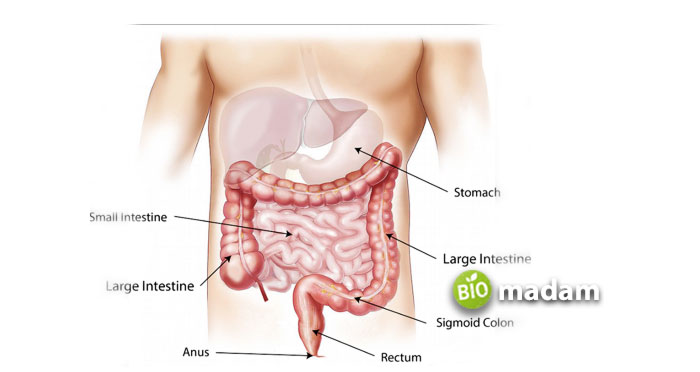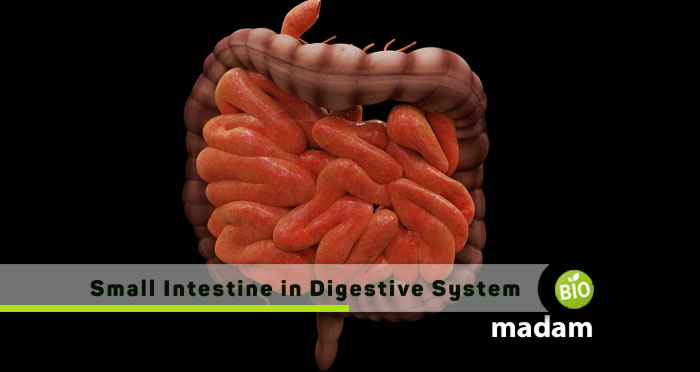The digestive system is one of the body’s vital systems and contributes to supplying nutrients to all parts. It consists of the esophagus, stomach, small and large intestines, colon, and anus. While they all work together to break down food and eliminate wastes from the body, the small intestine majorly helps absorb nutrients.
So, what does the small intestine do?
Let’s tell you about it and its functions in detail.
What is the Small Intestine?
The small intestine is the longest part of the gastrointestinal tract. The name “small intestine” refers to its lumen, which is smaller than the large intestine. It is a long hollow tube that helps food travel from the stomach to the large intestine and anus. But, besides the transport of food, it also helps absorb different micro and macronutrients required by the body to perform functions.
Parts of Small Intestine
The small intestine is divided into three components; Duodenum, Jejunum, and Ilium. Their division is based on their characteristics and functions majorly. No physical segregation is present between the three parts.
Duodenum
The duodenum is the first part of the small intestine measuring around 10 inches in length. It is a short segment that curves around the pancreas before the jejunum transcends. The duodenum helps in breakdown of the food before it reaches the next parts of the GIT. It facilitates digestion by using bile from the gallbladder, pancreas, and liver to help digest food.
Jejunum
The next part of the small intestine is the jejunum. It forms a coil to adjust into the abdominal cavity. It is around 8 feet in length. The jejunum has a reddish appearance because of the presence of blood vessels. It primarily pushes the food to the ileum and contributes to 40% of bowel movements.
Ileum
The ileum is the last and the longest part of the small intestine, around 12 feet in length. It comprises 60% of the small bowel in humans and opens into the large intestine. The main function of the ileum is the absorption of nutrients.
Functions of Small Intestine

The small intestine is a significant digestive system component as 90% of the digestive process occurs in the small intestine. While most physical digestion occurs in the stomach, chemical digestion occurs in the small intestine. Bile acids and different enzymes facilitate the process.
The detailed functions of the small intestine are:
Digestion of Proteins
Enzymes like Trypsin and Chymotrypsin aid in digesting proteins by breaking them into smaller peptides.
Digestion of Carbohydrates
Enzymes help break down carbohydrates, just like proteins, into simpler components in the small intestine. Pancreatic amylase breaks down carbs into oligosaccharides. Other carbohydrates disintegrate into monosaccharides.
Digestion of Lipids
Enzymes like lipases from the pancreas break down lipids, saturated and unsaturated fats and produce fatty acids and monoglycerides. The bile salts help the digestion of lipases into smaller parts that the intestinal villi can absorb.
Absorption
The small intestine is also responsible for absorbing nutrients. The food we intake is broken down into components to provide nutrients to the body. Villi and microvilli present in the ileum of the small intestine absorb the nutrients into the bloodstream. Villi are tiny finger-like structures called villi with a large surface area to improve absorption. The cells further have finger-like projections called microvilli. They make absorption into the bloodstream possible.
Some nutrients like amino acids and glucose are absorbed through active transport. Similarly, lipids and fatty acids move through diffusion and the small intestine absorbs maximum water through osmosis. It also absorbs vitamins and minerals according to their chemical structure. Fat-soluble vitamins are absorbed with dietary fibers, and water-soluble are absorbed through diffusion.
Related Questions
Does the small intestine absorb everything?
No, while most of the absorption takes place in the small intestine, some dietary fibers and carbohydrates move to the large intestine to be digested by intestinal bacteria.
What is the small intestine length?
The small intestine is about 22 feet in length. It is coiled inside the abdomen to fit properly. The duodenum is the shortest part of the small intestine (10 inches in length). The jejunum and ileum are around 8 and 9 feet long.
How long does food stay in the small intestine?
The food stays in your small intestine for between 2 and 6 hours. It is digested and absorbed during the period.
The Bottom Line
The process of digestion and absorption cannot be complete if the small intestine is not present. It is crucial to break down the food for absorption chemically. The villi and microvilli help the absorption of nutrients into the bloodstream. Food stays for around 2 to 6 hours in the small intestine, giving it ample time to digest the food into absorbable particles and push the rest to the large intestine.

Anna has completed her degree in Pharmacy from the University of Hawaii. She is serving as a research assistant in a pharmaceutical company. She had a great interest in writing blogs, traveling to different parts of the US, and trying delicious recipes in her spare time.

